The Russian savages blew up the dam of the Kahovka Hydroelectric Power Station, which has resulted in the threat of flooding many settlements, particularly a part of the city of Kherson. Even when the water recedes, the problems caused by this barbaric act will only begin. They will have big enough scale to be observable by satellites from orbit for many months.
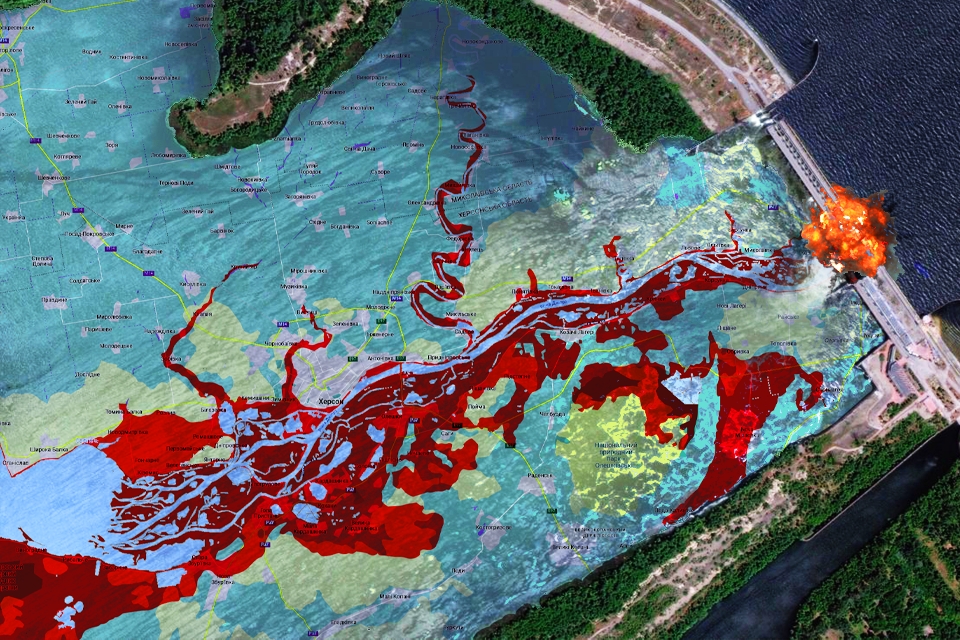
The explosion at the Kahovka Hydroelectric Power Station
On the morning of June 6, 2023, people were shocked by the news that the Russian occupiers had blown up the dam of the Kahovka Hydroelectric Power Station in the Kherson region in southern Ukraine. The information channels of the invaders themselves cynically reported this. And, of course, they blamed the Armed Forces of Ukraine for this “terrorist act,” even though from the very beginning of the invasion, it were Russians who had all the capabilities for such actions.
The Kahovka Hydroelectric Power Station and its dam were colossal reinforced concrete structures, as can be seen from satellite images taken before the destruction. Its height alone was about 30 meters, approximately equivalent to a 9-story residential building, and its length was 3850 meters.
This massive concrete structure held back a huge volume of water in the Kahovka Reservoir, which amounted to 18 km3, making it one of the largest freshwater reservoirs in Europe.
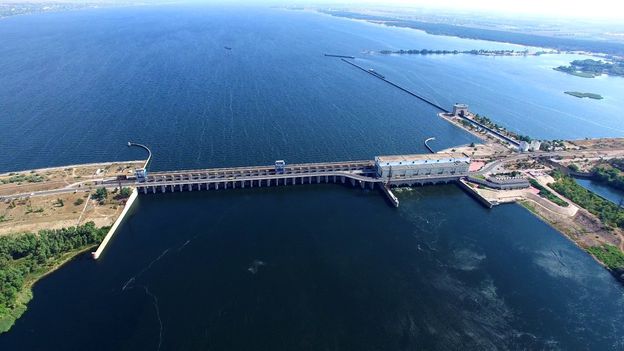
The destruction of the dam resulted in flooding the Dnipro River valley downstream. However, most of the consequences of this barbaric act of destruction are yet to come. The entire southern region of Ukraine, if not the entire Black Sea region, will experience them.
Possible flooding of Kherson
The first consequence of the dam explosion that people have already encountered is the flooding of territories and settlements located downstream of the Dnipro River. The riverbed runs through lowlands from the city of Nova Kakhovka to the Black Sea, with many floodplains and islands along its course.
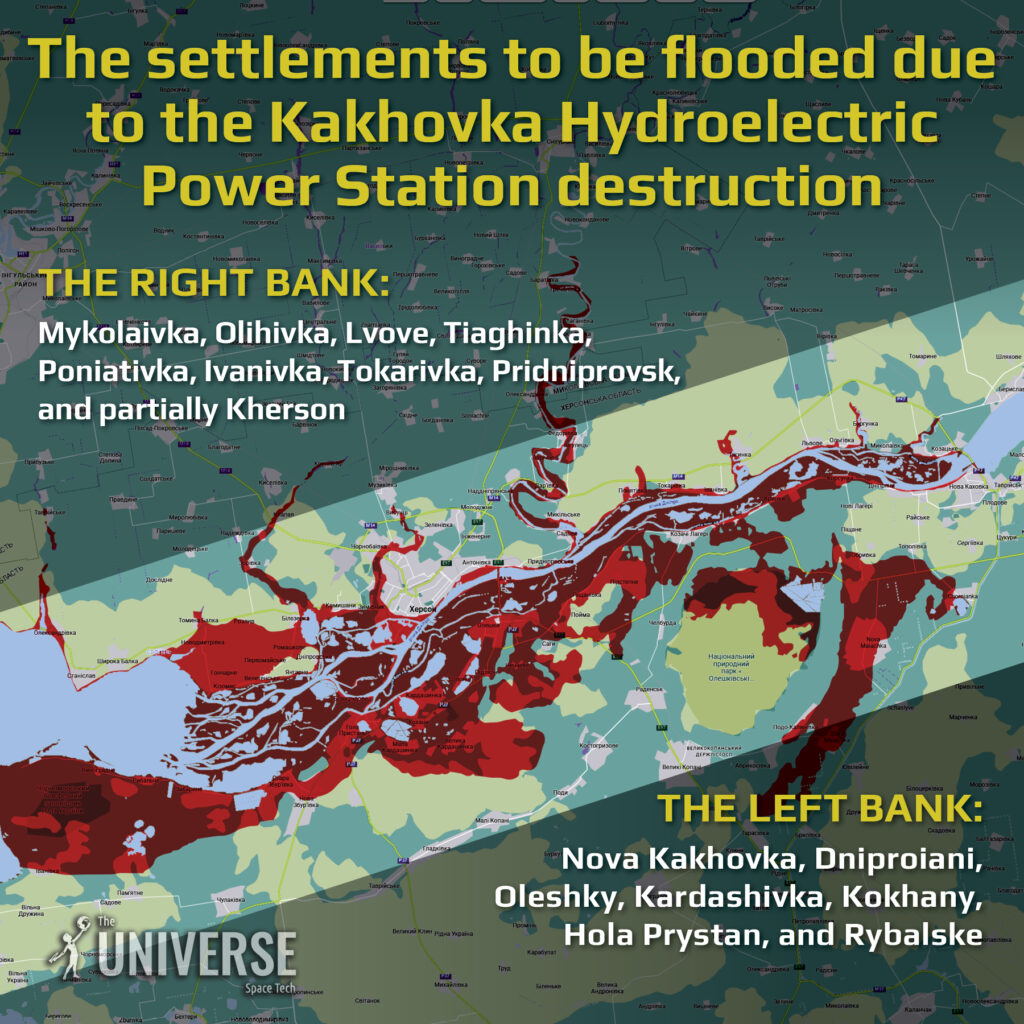
The catastrophic wall of water, several meters high, which was expected according to some models of dam destruction, was avoided precisely because the Dnipro River valley is wide enough at this point. However, the water arrived incredibly fast, and by morning, more than ten settlements were threatened by flooding.
On the left bank, which is occupied by the Russians, these settlements included Nova Kakhovka, Dniproiani, Oleshky, Kardashivka, Kokhany, Hola Prystan, and Rybalske. On the right bank, the affected areas included Mykolaivka, Olihivka, Lvove, Tiaghinka, Poniativka, Ivanivka, Tokarivka, Pridniprovsk, and partially Kherson. People had to be evacuated en masse, and their livelihoods suffered immense damage.
Of course, the fate of Kherson is the most concerning, as the occupiers had been threatening to blow up the dam and flood the city since autumn. However, a significant part of the city is located high enough to avoid complete evacuation. Within a few days, the water will recede, and these areas can be restored. Of course, provided that Russian troops do not hamper that by shelling.
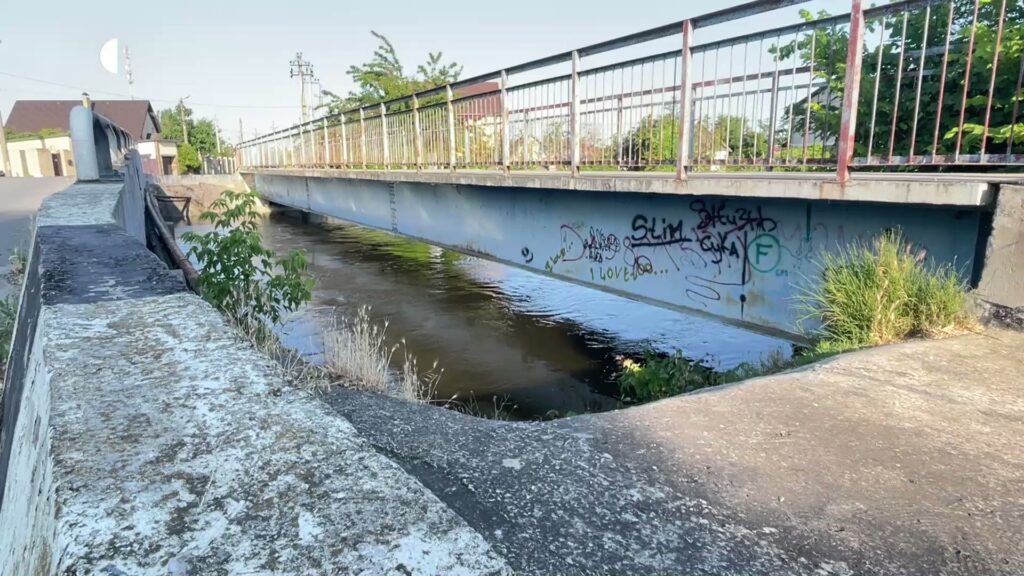
Impact on Ukraine’s energy sector
However, the problems caused by the explosion are just beginning. The administration of hydroelectric industry (Ukrhydroenergo) has already announced that the power plant is completely destroyed and cannot be restored. This means that Ukraine has once again lost a part of its power generation capacity.
However, the Kahovka Hydroelectric Power Station generated only 1,420 kWh per year, which is less than one percent of the total capacity, so this decrease itself will not be critical. But we can still feel its impact because this energy was mainly used during peak hours. Therefore, it is possible that the consequences of the explosion will be felt at night when Ukrainian cities plunge into darkness again.
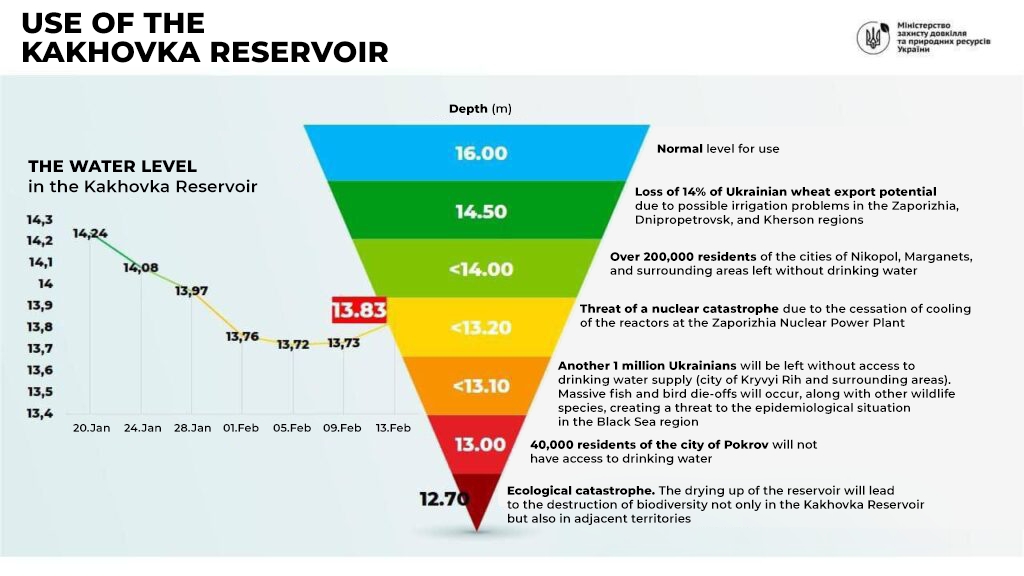
However, a much more dangerous situation, both from an energy and ecological perspective, is the decrease in the water level in the Kahovka reservoir. On its shores stands the Zaporizhia Nuclear Power Plant currently controlled by the Russian invaders. This largest nuclear power plant in Europe uses the water from the reservoir for cooling reactors. Without the cooling by the Dnieper River water, its operation becomes impossible. Although the last of its six reactors was shut down in the spring of last year, even in a shutdown state, they still need to be cooled.
If the reservoir, from which water has been taken for these purposes, critically dries up, the reactors will begin to overheat after some time. The consequences of this are difficult to predict. There is a potential for a catastrophe on a scale comparable to Chernobyl. Even if there is no explosive rupture of the first circuit, there is still a risk of the melting of the active zone. In case timely measures are not taken, the radioactive lava will quickly penetrate to the level of groundwater. With them, dangerous isotopes will enter the Dnieper River and then the Black Sea. In this case, the consequences of just one explosion will be felt far beyond the borders of Ukraine.
Collapse of irrigation and water supply systems
The Kahovka reservoir provides water not only for the cooling of the nuclear power plant but also for numerous irrigation systems that support agriculture.
The most significant of them is the North Crimean Canal, which stretches for 402.6 km. This canal is the main artery that supplies water to the Russian-occupied Crimea. Taking control of it was one of the main objectives during the invasion. Now they have effectively rendered it unusable.
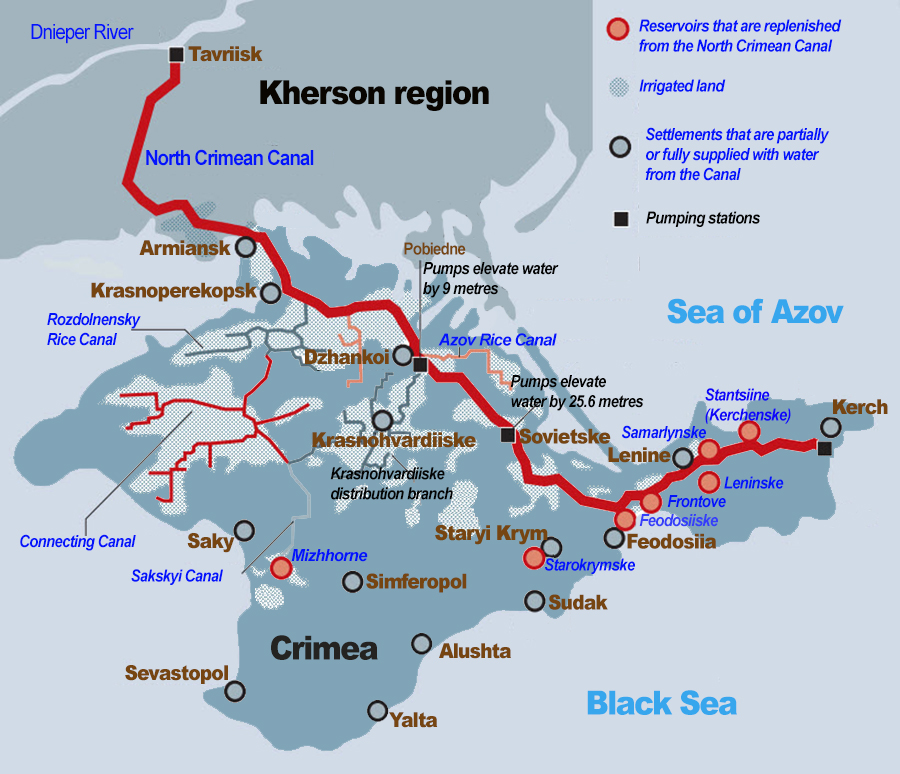
And this is bad not only for Crimea but also for the southern part of the Kherson region. The agricultural crops that we are accustomed to, which symbolize this region, can only be grown thanks to the North Crimean Canal and smaller irrigation systems.
Without it, horticulture in these areas becomes problematic, which was the reason for its construction in the first place. Since then, the climate in southern Ukraine has not changed, which means that the main problems are still ahead.
Significant damage has also been done to urban water supply systems, which depend on it in almost all cities near the Kahovka reservoir. Sometimes it is water intakes, and sometimes it is wastewater treatment facilities. In any case, they are designed for the current water level. Their interruption for several weeks can lead to a humanitarian catastrophe with water shortages and the spread of diseases.
“Zombies”-floodplains
And in general, we have not fully realized as yet the simple fact that such a large reservoir, which we are accustomed to seeing not only on the map of Ukraine but also Europe, can disappear. Its length reaches 230 km, and the maximum width is 24 km.
During the creation of the Kakhovka Reservoir, several dozen settlements were flooded. In addition, all this lowland area is the same Great Meadow that occupies a central place in the history of Ukrainian Cossacks. The remains of 6 out of 7 historical Zaporizhian Sichs (administrative and military centres of the Zaporizhian Cossacks) and the capital of Khan Mamai, the city of Zamik, lie at the bottom of the water. And now all of this can surface.
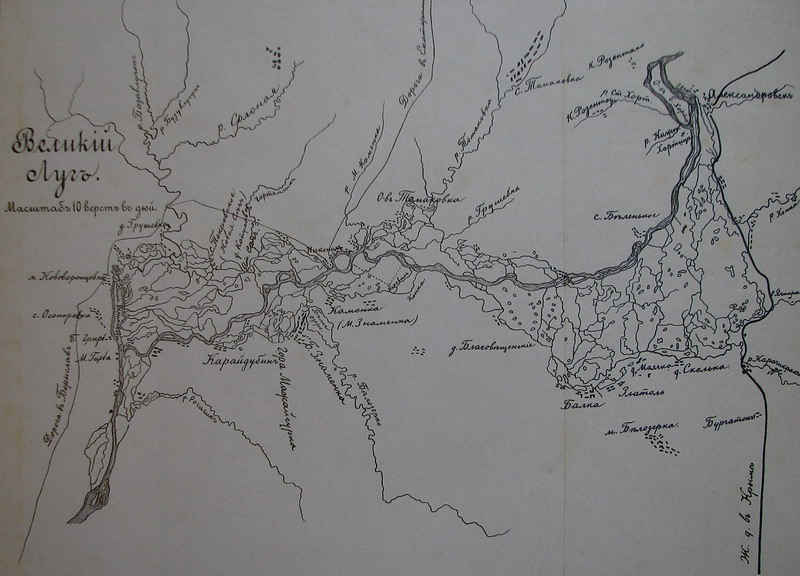
And it is not as good as it may seem. The creation of the reservoir caused significant damage to historical heritage and the environment. That is why calls to eliminate it have been made since the independence of Ukraine.
However, over the decades that have passed, the ecosystem of the reservoir has more or less stabilized. 150 species of zooplankton, 180 invertebrates, and 56 fish species lived here. Numerous birds nested on the shores. And the reservoir itself gradually turned into a familiar recreation area.
Now, in place of all this, marshy and lowland meadows will form again. However, they will be dead — a kind of “zombies” — as they will mainly consist of what has settled on the bottom of the reservoir over all these years. And in the event of a catastrophic drop in water level, the bodies of deceased living creatures will be added to all of this.
Only insects that carry disease-causing microorganisms will thrive in such conditions. In fact, this is another ecological catastrophe. Its consequences will be clearly visible from space. Because where there used to be water, only be black mud and debris will be left.
Climate problems
Another problem may surface within the next few months but will fully manifest itself only in a few years. Rivers are places where groundwater emerges. And when the Kakhovka Dam was built, their balance was disturbed.
To make the water flow out from under the ground, the discharge point must be higher than its level in the river. And it has risen after the construction of the dam. Together with it, the groundwater levels in the surrounding areas have also risen. This caused flooding of some basements and salinization of soils. However, these processes have partially stabilized over the decades.
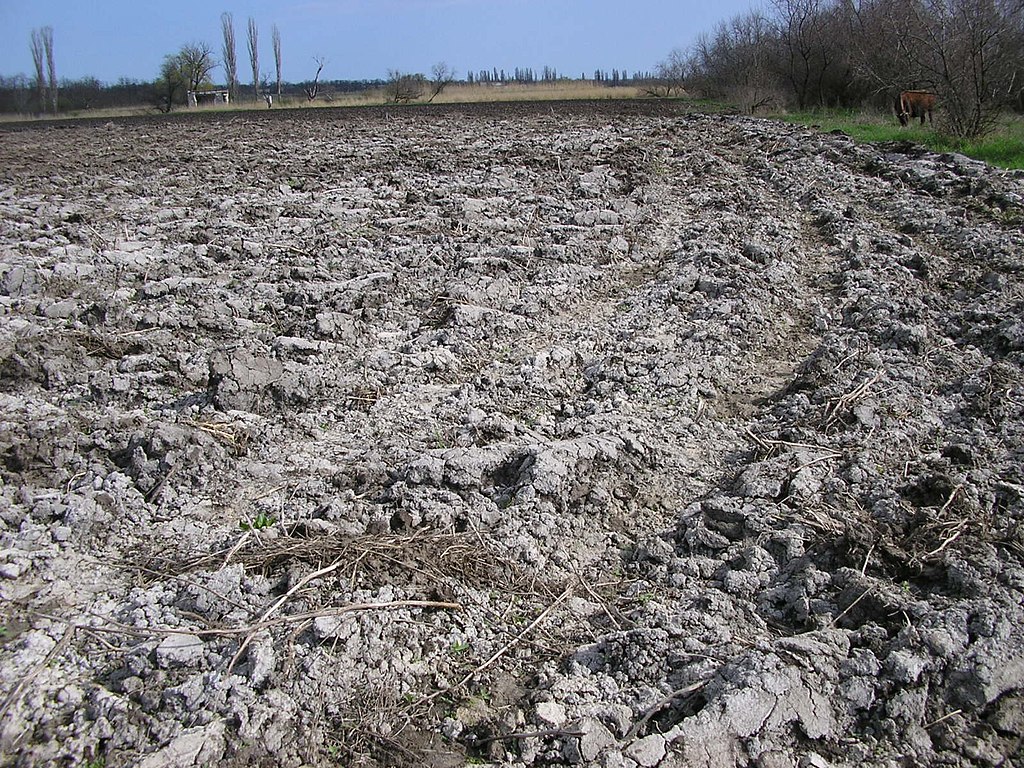
And now the water level will sharply drop again, and with it, the groundwater will go down. It is uncertain how this will affect the hydrogeological balance, but the results are unlikely to be positive. Water may disappear from wells and aquifers from which it flows into artesian wells.
And in places where groundwater was unwanted, nothing will change for the better. Salt will remain on the fields, and voids washed under buildings will become even more dangerous because nothing will hold their integrity anymore.
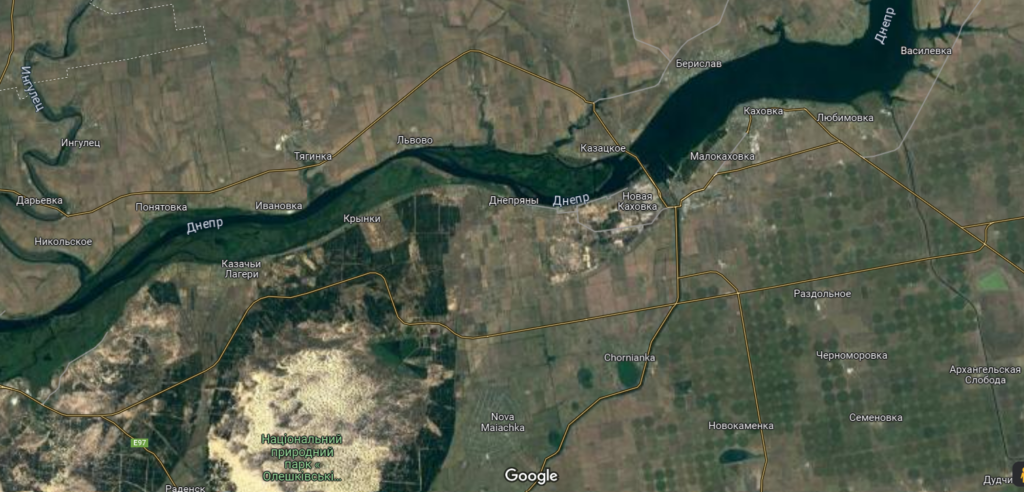
The sharp decline in groundwater levels will be particularly harshly felt in the south of Kherson Oblast. This region is already considered an area of active desertification. And the disappearance of water from irrigation systems and underground channels will further accelerate the drying of the soil. Winds will blow nutrients out of it, and vegetation will perish.
All these processes have been observed by satellites in various regions of the world for decades. Southern Ukraine has been considered a region under threat until now. However, the destruction of the Kakhovka Hydroelectric Power Station dam can finally disrupt the balance that exists in this region of our planet. The entire area between Nova Kakhovka and Dzhankoy may turn into a desert in a few years. And the wild marshes that the bottom of the Kakhovka Reservoir will turn into will not fix the situation.
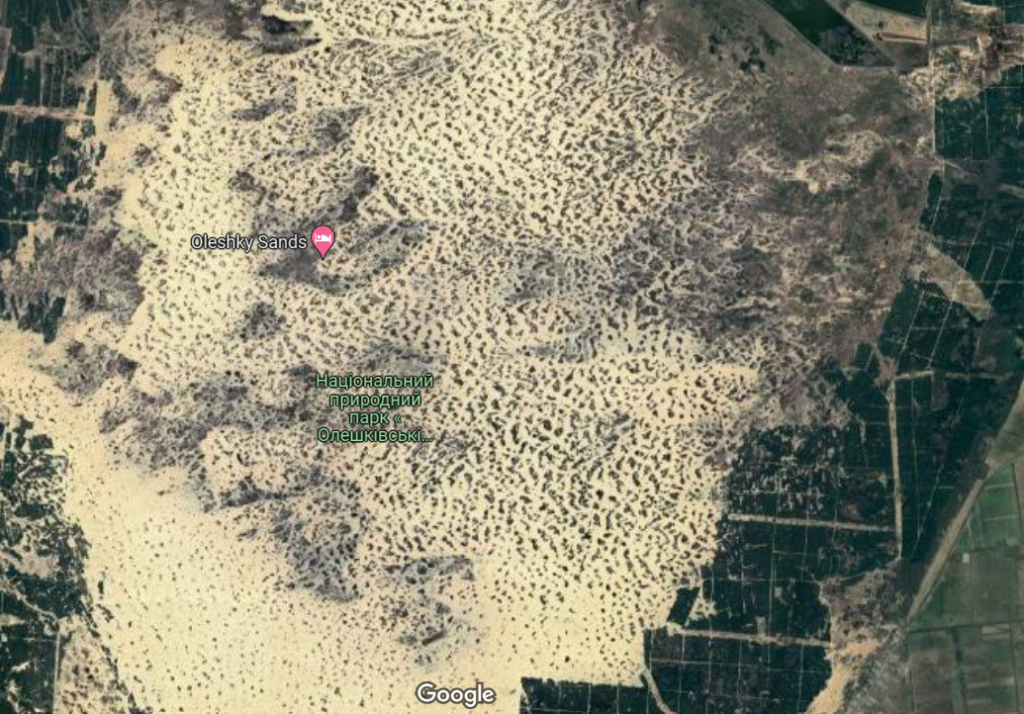
Satellite images will show brown, black, gray, and yellow instead of the usual green color. We can only hope that the international community and the Ukrainian Armed Forces will cleanse this territory from Russians as well as the other factors harmful to the environment, and thus avoid a major catastrophe.
